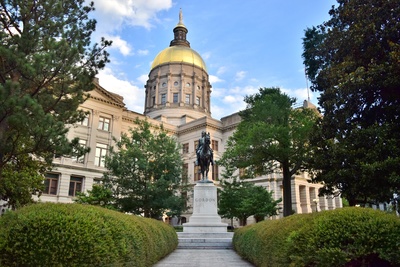-6d814b-400px.jpeg)
Tax & Budgets
State Budgets 101 (Plus Key States to Watch)
April 11, 2025 | Andrew Jones
-7a7988-1200px.jpeg)
Key Takeaways:
State policymakers and analysts everywhere are nervous about historic fiscal challenges. The real worry, however, isn’t merely the current state of their economies, but what could be coming. Combined, states lost 11 percent of tax revenue as a result of the Great Recession, and the National Association of State Budget Officers predicts that this coronavirus-induced recession will be worse. The most pressing challenge right now for states is the unknown: Will there be a vaccine or other effective treatments soon? When will consumers return to their normal spending patterns? What will happen to the economy of states that reopened but were forced to backtrack? And, equally importantly at this moment: Is more federal aid coming?
First, let’s review what states have already received from the federal government. Through a variety of legislation, states have received (or are eligible to receive) roughly $246 billion in federal aid to help combat the COVID-19 pandemic. This funding is derived from: $1 billion to state and local governments, mainly for public health (March 6th supplemental appropriations), $40 billion in a boost to the Medicaid Matching Rate (Families First Coronavirus Relief Act), and most well-known, $205 billion for state and local governments based on population and through education and transit grants (CARES Act).
Since then, state policymakers have been wondering if more is coming.
The Trump Administration, Congressional Republicans, and Congressional Democrats all seem to be operating on different pages when it comes to the next recovery package. In May, Democrats introduced the Heroes Act, a massive $3 trillion proposal which would have provided nearly $1 trillion to state, local, and tribal governments. The bill passed the House, but was dead on arrival in the Republican-controlled Senate.
Republicans are set to release their newest coronavirus-response legislation in the next several days. The legislation is reportedly delayed because of a disagreement between the Administration and Congressional Republicans on how to handle unemployment benefits that are set to expire at the end of this month. However, according to reports, their package at this point does not include direct aid for state and local governments. It would instead include additional funding for education and some additional flexibility associated with the funding provided through the CARES Act.
While $1 trillion to states may present its own set of problems, no additional funding for state and local governments is certain to put state legislators in an even tougher position than they are now. State-provided services are the services many Americans are most familiar with on a personal level, including education, emergency services, and transportation funding. Without additional federal funding, legislators are unlikely to be able to meet balanced budget mandates through cuts alone. And if the projections for revenue declines pan out, balancing the budget on the revenue side would require massive tax increases, particularly in states who were already in poor fiscal health.
Raising revenue is a difficult concept in the middle of a pandemic-induced recession: Do you tax individuals who may be facing financial pressure or businesses that are barely afloat because they were mandated to close? Both are almost certain to be unpopular. But both may ultimately be deemed necessary.
Without additional federal aid, we can expect groups that have historically championed tax increases will use this circumstance to argue that states must act to increase revenue. Just this month, the Roosevelt Institute called for states to use this financial crisis to increase taxes on wealthy individuals, boost corporate income taxes, and tax legal and professional services. These are policy provisions that states have largely avoided for years, but could be more tempting in the face of crashing revenues.
States are facing the revenue tension of providing increased services to help residents effectively navigate a health crisis while also trying to facilitate an economic recovery. If the federal government provides additional funding for state and local governments, state policymakers will likely face a far less difficult budgeting process next year.
-6d814b-400px.jpeg)
April 11, 2025 | Andrew Jones

April 8, 2025 | Liz Malm

April 8, 2025 | Andrew Jones